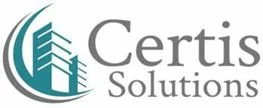What Does a Mechanical Engineer Do? A Guide to Mechanical Engineering Jobs
Mechanical Engineering is one of the most popular fields in the world of engineering. But what exactly does a Mechanical Engineer do? Let’s dive into the key duties, responsibilities, and requirements for Mechanical Engineering jobs in a way that’s easy to understand.
What’s a Mechanical Engineer’s Job?
Mechanical Engineers design, develop, build, and test all kinds of mechanical devices and systems—think machines, tools, and engines. And here’s the kicker: they’re not just limited to the tech industry. Any business that uses mechanical systems needs someone to keep things running smoothly. That’s where Mechanical Engineers come in.
You’ll find these engineers in places like the military, IT, high-tech manufacturing, commercial properties, and beyond. They’re often the go-to experts with knowledge most team members don’t have. Whether it’s teaching people how to use tools or setting up systems that work even when they’re not around, Mechanical Engineers are key players.
The Skills You Need
Mechanical Engineers need a strong foundation in:
- Mechanics
- Thermodynamics
- Hydraulics
- Heat Transfer
But don’t worry—these skills can be developed further on the job. And since engineers work closely with others, soft skills like communication and patience are a must.
What Does the Job Involve?
Here’s a quick rundown of what Mechanical Engineers typically do:
- Design and test products and production equipment.
- Analyze systems and find ways to improve them.
- Work with complex mechanical systems and detailed designs.
- Plan, build, and test new projects.
- Take on leadership roles during production phases.
- Keep projects on track with schedules, budgets, and resources.
- Share updates with the team and pitch ideas for improvement.
- Write reports or whitepapers explaining how systems work.
- Always look for ways to make designs and processes better.
- Align your work with the company’s goals to ensure top-notch results.
What You Need to Get Started
Mechanical Engineering isn’t exactly a walk in the park. Most companies look for:
- A bachelor’s degree in Mechanical Engineering.
- Two to five years of experience in a relevant role.
Experience can vary depending on the project, but having worked with clients to meet their goals and specs is a big plus. Other must-knows include:
- Raw materials and production processes.
- Quality control practices.
- Keeping costs under control to hit business goals.
Traits That Help You Shine
Want to stand out as a Mechanical Engineer? Here’s what can help:
- Align with your company’s mission and values.
- Stay up to date on what competitors are doing.
- Be a strong communicator who can explain technical ideas clearly.
- Show initiative by improving designs and processes.
- Stay curious and keep learning to grow your skills.
- Be detail-oriented and organized—small mistakes can make a big difference in this field.
How Certis Solutions Can Help
At Certis Solutions, we’re all about connecting top talent with the best engineering opportunities. Whether you’re into Mechanical Engineering, geotechnical, transportation, structural, electrical, plumbing, or other fields, we’ve got you covered. Ready to find your next great role? Contact us today and let’s make it happen!
